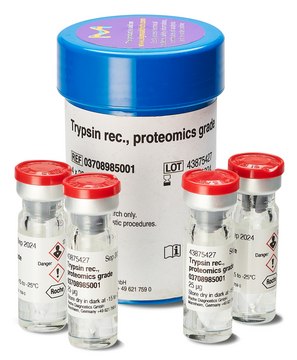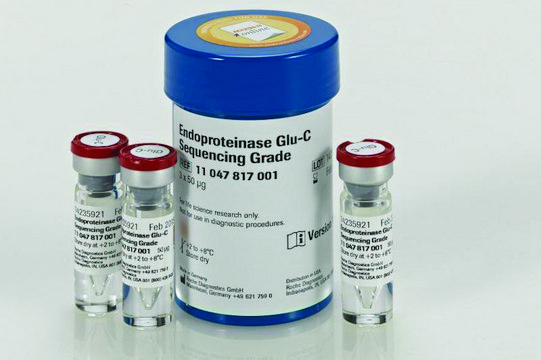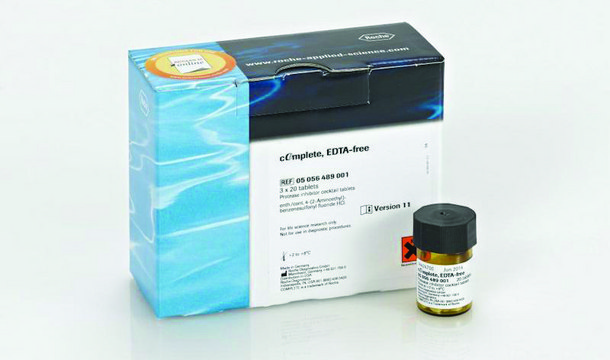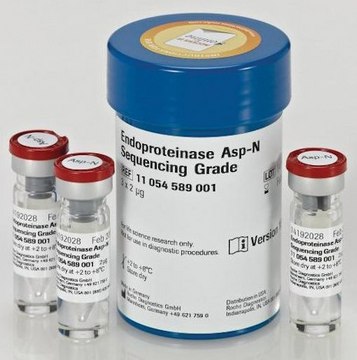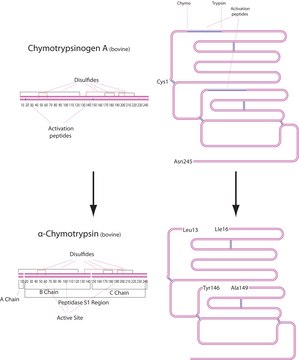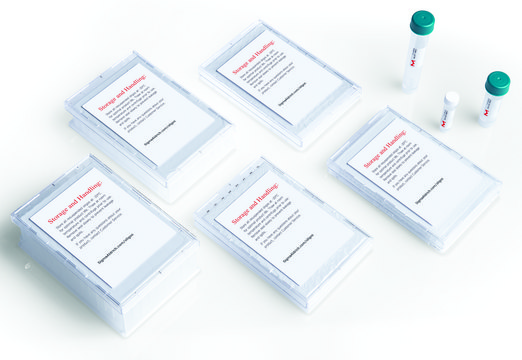11418467001
Roche
Chymotrypsin Sequencing Grade
from bovine pancreas
Synonym(s):
chymotrypsin, protease
About This Item
Recommended Products
biological source
bovine pancreas
Quality Level
Assay
≥90%
form
lyophilized (salt-free)
specific activity
≥70 units/mg protein (at 25 °C, with ATEE as a substrate)
mol wt
Mr 25 kDa
packaging
pkg of 4 × 25 μg
manufacturer/tradename
Roche
technique(s)
protein sequencing: suitable
optimum pH
7.0-9.0
shipped in
wet ice
storage temp.
2-8°C
Related Categories
General description
Specificity
Application
Quality
Preparation Note
Storage conditions (working solution): 2 to 8 °C
A solution in 1 mM HCl can be stored for up to one week at 2 to 8 °C.
Inhibitors: Aprotinin, DFP, PMSF, phenothiazine-N-carbonyl chloride, TPCK, ZPCK, α2-macroglobulin, α1-antitrypsin, soybean trypsin inhibitor, and chymostatin. No inhibition by APMSF.
Reconstitution
Other Notes
Signal Word
Danger
Hazard Statements
Precautionary Statements
Hazard Classifications
Eye Irrit. 2 - Resp. Sens. 1 - Skin Irrit. 2 - STOT SE 3
Target Organs
Respiratory system
Storage Class Code
11 - Combustible Solids
WGK
WGK 1
Flash Point(F)
Not applicable
Flash Point(C)
Not applicable
Regulatory Information
Choose from one of the most recent versions:
Already Own This Product?
Find documentation for the products that you have recently purchased in the Document Library.
Articles
Method development for protein fingerprinting of AAV serotype 5 using both intact mass analysis and peptide mapping, to determine critical quality attributes for gene therapy, utilizing three different columns.
Our team of scientists has experience in all areas of research including Life Science, Material Science, Chemical Synthesis, Chromatography, Analytical and many others.
Contact Technical Service